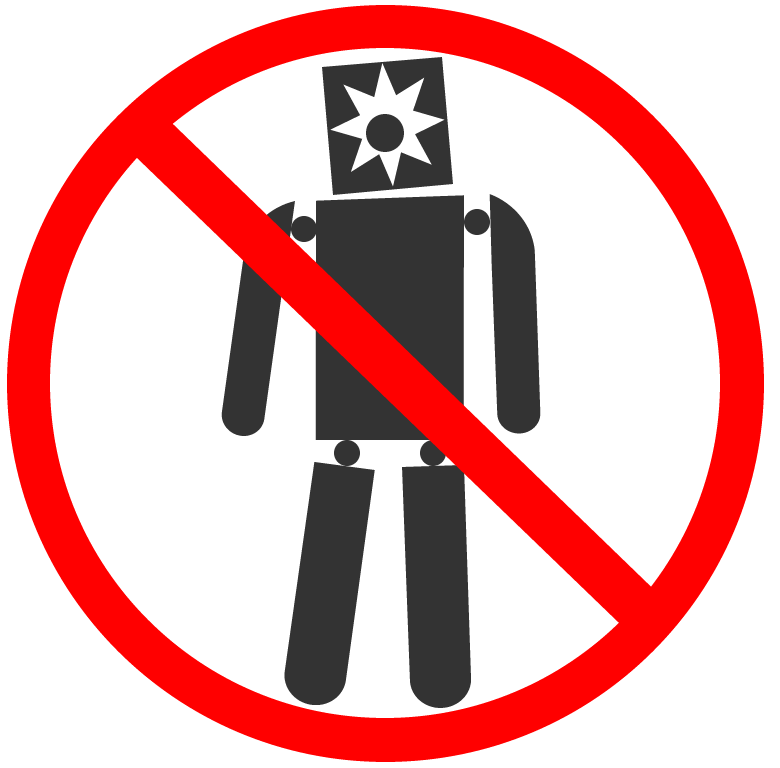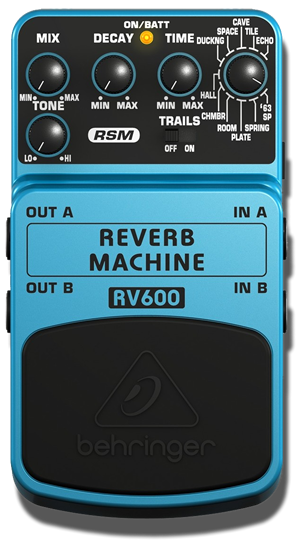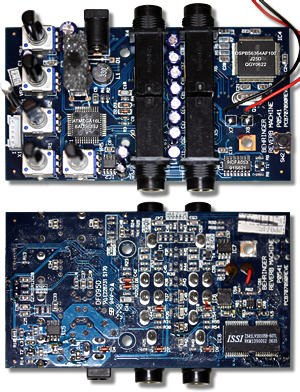
When buying
a used Behringer RV600 Reverb Machine be mindful of the device's condition. Being a stompbox, hard wear and tear is very probable. Also Keep in mind that the pedal you are looking to buy could be up to
years old (that's a lot of stomps).
If the seller says things like 'in excellent condition, just minor wear from normal use' and the thing looks like it has only just survived a bomb blast - just walk away. There are people who look after their gear - buy from them.
It's not a bargain if it's busted.
Being a good little machine, I rarely see used RV600s for sale. So expect prices to be around 50% to 75% of the new price.
There are people who think that they can claim 'great condition, minimal use' and ask just a few bucks less than the cost of a new one, that will also have a warranty - well, lets just say they are probably living in a parallel universe. Just FYI: When you on-sell gear, the warranty is almost always voided, regardless of the age/condition of the device.
Behringer RV600 Reverb Machine Specifications
| Inputs | |
| A & B Use input A for mono |
6mm (!/4") TS 500 kΩ impedance |
| Frequency Response | Not Stated |
| Noise Response | Not Stated |
| Sampling Rates | Not Stated |
| Outputs | |
| A & B Use output A for mono |
6mm (!/4") TS 1 kΩ impedance |
| Power | |
| Power Consumption | 30mA (really?) |
| Power Supply | DC - 9V 100 mA Regulated |
| Power Connector | 2mm DC jack, Negative Centre |
| Battery | 9V type 6LR61 |
| Editor - Not suited for use with Rechargeable Batteries - See note about battery operation. | |
| Physical Specs | |
| Weight: | 330gm (11.6 oz) approx. |
| Dimensions: | Width: 70mm (2-3/4 ") Depth: 123mm (4-4/5") Height: 54mm (2-1/8") |
GEAR RELATED ARTICLES
[Home Music Recording Studio]
GUITAR AMPLIFIERS:
Acoustic 450 - 170W Guitar / Bass Amp Head
Behringer Ultrabass BXL1800A 180W Bass Amp
Fender Princeton Chorus 51W Compact Amp
GUITARS:
Aspen AD25 6 String Acoustic Guitar
Esteve Model 8 Classical Guitar
La Patrie Concert CW QIT Classical Guitar
La Patrie Presentation Classical Guitar
Fender DG-14SCE Nat Acoustic Guitar
Godin XtSA Electric Guitar
Godin Freeway Classic Electric Guitar
Ibanez RG8 8 String Electric Guitar
Jim Beam Devil's Cut 335 clone
Maton EM125C - 6 String Acoustic Guitar
Maton EM425C/12 12 String Acoustic Guitar
Maton Mastersound MS500 - 6 Str Electric Guitar
Yamaha FG-410-12A 12 String Acoustic
Yamaha G-228 6 String Classical
GUITAR FX - The Chronicles of Zoom:
ZOOM GFX-707 - Review and Description
ZOOM 707 II - Review and Description
ZOOM BFX-708 - Bass Guitar Multi Effects Pedal
ZOOM G9.2tt - Guitar Effects Console
Behringer EM600 Echo Machine Stomp Box
Behringer RV600 Reverb Machine Stomp Box
ROLAND U-220 - Vintage Sound / Synth Module
SN-U110 and SN-MV30-S1 Series PCM Cards
Behringer FBQ1502HD Ultragraph Pro
Behringer Eurorack Pro RX1602 Rackmount Mixer
Capabilities of the CASIO WK-7500 Workstation
Presonus Eris E5 Powered Monitor Speakers
Vonyx (Skytec) SPJ-1000A Active 10" Speaker
[ Advertising ]
Behringer RV600 Reverb Machine - Review and Description
(Rating 6/10)
The Behringer RV600 Reverb Machine has been in production since around 2012 and is a good value, budget, reverb modelling stomp pedal with a lot of useful options for creating ambience effects.
An important consideration for the purchase of the RV600 was that this unit can be used as Stereo In/Out or Mono In with Stereo Out (most similar pedals are Mono only or Mono In with Stereo Out).
The RV600 Reverb Machine has a useful array of reverb models including:
'63 Spring, Spring, Plate, Room, Hall, Chamber, Ducking, Space, Cave, Tile, and Echo.
A basic set of controls include: Mix, Decay, Time, Mode, Tone and a Trails switch.
 About Review and Description articles, click to expand
About Review and Description articles, click to expand
The RV600 is supposed to be "an excellent clone of the Line 6 Verbzilla" (which is great, I guess, if that means something to you ;-) There are even web sites dedicated to comparing the two devices.
In my case, the RV600 has been a bit of a workhorse for about
years. Using it primarily in the FX loop of a small mixer, along with a Behringer EM600 Echo Machine. A simple and compact solution for a small, mainly keyboard sub-mixer setup.
The RV600 Reverb Machine has been around for a while and it appears that it only makes it into anyone's top 5 or top 10 list if they are trying to sell it. In fairness, there are currently some absolutely amazing super reverb units available (e.g. Mooer Ocean Machine), and this is definitely not one of them.
It is however much better than some of the reviews I read before purchasing (back in March of 2016).
I still fail to understand why people get all disappointed and bent out of shape when a $100 pedal does not perform like one costing five to ten times more.

Audio Quality (9/10)
For a budget priced pedal, the overall audio quality really is quite excellent. I'm using this pedal where a rack unit should be. Even though the RV600 was never intended to be used with line level signals, it works fine (undistorted) with some careful signal level control.
There is no inherent noise to speak of and the various settings provide some delicious reverb effects. One would need to spend a considerable amount more $ to get better results.
Note:
Available specifications make no mention of Frequency Response, Noise Levels or Sampling Frequencies (A/D, D/A), for the RV600.
Features (8/10)
For a small stompbox, the RV600 Reverb Machine does have a very good set of practical and useful options. A little dated now perhaps, but still handy to have.
• Worth remembering is that all delay/echo effects are being simultaneously generated across two channels (in stereo).
• Remembers Power On/Off State - If power is disconnected while device is ON, device switches ON when power is restored.
The Trails ON/OFF switch is a must-have for any delay-centric device. A timed fade-out would also be nice though.
'The Reverb Machine Setting Options (moving clockwise):
- 63 Spring - emulates the classic sound of a 1963 guitar combo spring reverb.
- Spring - emulates a typical spring reverb.
- Plate - Resonant, metallic sound of a plate reverb.
- Room - clear natural acoustics of a room (size not specified ;-)
- Hall - Bright and open reverb simulating a concert hall.
- Chamber - Emulates the highly reflective acoustics of a reverb chamber.
- Ducking - Hall reverb with ducking effect.
- Space (Octo) - Ambient lush reverb with harmonised octave shifted content.
- Cave - Deep and large echo like - oh, I wonder what?
- Tile - Think tiled bathroom, lots of early reflections.
- Echo - A fat echo with Reverb.
A good set of options, some implemented better than others. Excellent value for the price though.
RV600 Reverb Machine - Build Quality (7/10)
Durability & Reliability (Not Rated)
 The case is a robust plastic which should survive even moderate brutality. Being plastic means that more attention had to be paid to shielding the internal circuit board. The overall result of course is less weight and considerably lower cost.
The case is a robust plastic which should survive even moderate brutality. Being plastic means that more attention had to be paid to shielding the internal circuit board. The overall result of course is less weight and considerably lower cost.
While the externals may be solid (case and knobs), the internal build quality is ordinary at best. Perhaps Behringer figure no one will ever look inside - hmm, they might be wrong ;-)
Durability & Reliability have not been scored because the device has seen very little time in use as a stompbox in the
years I have been using it. As such I'm unable to comment on micro switch durability and hinge reliability. The hinges are plastic, so my expectations would be low.
In my application the RV600 is left permanently on (with a DC supply) - coming on when the keyboards are fired up.
Click on the image at right for a larger version.
Note: The RV600 Reverb Machine and EM600 Echo Machine use the same primary DSP chipsets.
Some Additional Notes
Battery Operation & Performance (Poor - no, actually abysmal)
Important! if operating with batteries - Remember to unplug the guitar lead when not in use to avoid unnecessary battery depletion.
The Behringer RV600 Reverb Machine (like the EM600 Echo Machine) depletes 9 Volt batteries at a truly frightening pace. In truth, it is really not practical to operate these devices with batteries and the instructions should say as much.
Because of their 'hunger', these stomp boxes are not rechargeable battery friendly. If you absolutely need pedals that run on battery power, give the EM600 and RV600 a miss.
Strongly recommend a suitable 9V DC power pack that can comfortably provide 100mA (stated minimum required is 30mA - hard to believe) to the 2mm, negative centre, DC socket.
Warranty
All new and registered Behringer products come with a 3 year limited warranty. The catch of course is that the product should be registered within 90 days of purchase and the warranty is not transferable upon resale ... and you have to jump through their hoops, which is to say that Behringer try to put you off from completing this [Warranty - Please go here].
 About Behringer products
About Behringer products
I have read quite a few forum posts where someone has purchased a Behringer stompbox (or other gear), then complained long and loud about how it doesn't work properly in their rig. Often, this turns out to be due to user ignorance (too lazy to read the manual). Sometimes it is because they have cobbled together a collection of truly diverse and utterly crappy gear and yet expect it all to sound like something you'd find in a studio.
And lastly, there are also those who absolutely hate Behringer products and will grasp any opportunity to mention that to anyone who will listen. To whom I would just say, - Get over it, get a life!
The reality is that Behringer do have some great products. Whilst some products might be considered budget or entry level gear, try finding a similar Chinese clone that offers a 3 year warranty.
Review Ratings:
- Feature Set - 6 / 10 (good but dated)
- Sounds Quality - 8 / 10 (very good, low noise, clean bypass)
- Ease of Use - Interface & Editing - 6 / 10 (OK but not suitable for live tweaking)
- Build Quality - 7 / 10 (materials OK, quality control shabby)
- Durability & Reliability - x / 10 (not scored, not primarily used as a stompbox)
- Battery performance - 3 /10 (it is a stompbox and it should do better)
- Value for Money - 7 /10
- Overall Average Score ... 6 / 10 - If nothing else, an inexpensive and handy device to have around.
Was this page useful?
Rate This Page:
| Page Ratings so far ... | ||
| Excellent | 3 | |
| Very Good | 0 | |
| Useful | 0 | |
| Not Useful | 0 | |
| TOTAL | 3 | |
Your Comments:
221107 - (Excellent) Hello, I'm pretty sure that " 63 SP " is referring to Fender's outboard units (radically different from the inboards ... think Drip). The " Spring " setting would lean towards the ' combo ' that you mention ... just guessing.
Editor's Note: I use the RV600 Reverb Machine and EM600 Echo Machine as send/return FX for a small keyboards mixer. Works great! (when not on battery power![]()
There was a time, when I used to know who played what on every record (and later CD), I owned. Including what their rig was like and how they got 'that particular' or perhaps, 'that peculiar' sound. That was in the 70's to 80's.
By the 90's I'd largely given up on that and took the view that "if you can't buy it, build it". But then by the end of the 90's, monster Multi-FX 'consoles' were becoming common and DSP was the new thing.
These days I plug my Godin xtSA into an AXE-FX III for all things modelled and a Roland Integra 7 (via MIDI Guitar software) for any and all synth sounds. There are no boundaries any more ... and I don't have to waste brain RAM on who made what ;-)
But seriously - I do appreciate your input. Because other people read this. The important thing is to keep having fun!
... and remember ... if you wake up in the morning, it's a good day!
Incept Date: Wizard - 200124
Last Update: Wizard - 230617
